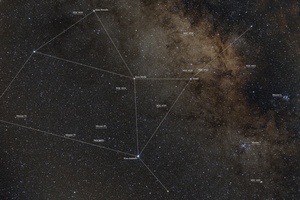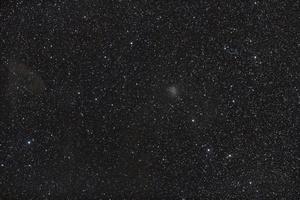Nebulae in Sagittarius is the topic of Part #2 of our image presentation, where we want to share the results from our astrophotography-trip to ATHOS Centro Astronómico at La Palma.
Constellation Sagittarius contains many wonderful emission nebulae, which are well known. Let's have a detailed look at following three prominent examples: M 20, M 8 and M 17.
The Trifid Nebula (catalogued as Messier 20) is an unusual combination of an open star cluster, an emission nebula (the lower, red portion), a reflection nebula (the upper, blue portion) and a dark nebula (the apparent 'gaps' within the emission nebula, which lead to its nickname Trifid Nebula).
The Lagoon Nebula (Messier 8) is one of the finest and brightest star-forming regions in the sky. It is a giant cloud of interstellar matter which is currently undergoing vivid star formation, and has already formed a considerable cluster of young stars.
Messier 17 (also known as The Omega Nebula or the The Swan Nebula) is part of a cloud, which is considered one of the brightest and most massive star-forming regions of our galaxy.
Constellation Sagittarius contains besides galactic objects also galaxies. A nice example is the dwarf galaxy NGC 6822 (also known as Barnard's Galaxy).












